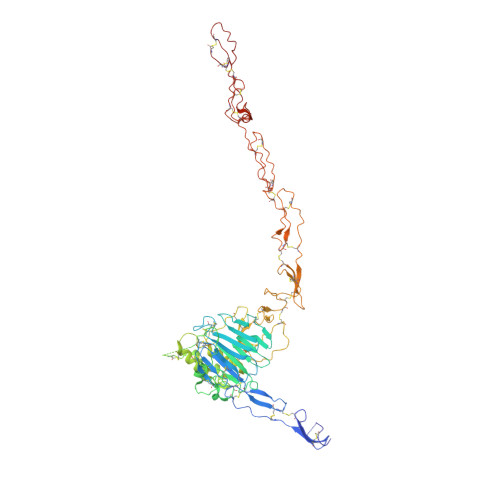The intestinal MUC2 mucin C-terminus is stabilized by an extra disulfide bond in comparison to von Willebrand factor and other gel-forming mucins.
Gallego, P., Garcia-Bonete, M.J., Trillo-Muyo, S., Recktenwald, C.V., Johansson, M.E.V., Hansson, G.C.(2023) Nat Commun 14: 1969-1969
- PubMed: 37031240
- DOI: https://doi.org/10.1038/s41467-023-37666-8
- Primary Citation of Related Structures:
7QCL, 7QCN, 7QCU - PubMed Abstract:
The MUC2 mucin polymer is the main building unit of the intestinal mucus layers separating intestinal microbiota from the host epithelium. The MUC2 mucin is a large glycoprotein with a C-terminal domain similar to the MUC5AC and MUC5B mucins and the von Willebrand factor (VWF). A structural model of the C-terminal part of MUC2, MUC2-C, was generated by combining Cryo-electron microscopy, AlphaFold prediction, information of its glycosylation, and small angle X-ray scattering information. The globular VWD4 assembly in the N-terminal of MUC2-C is followed by 3.5 linear VWC domains that form an extended flexible structure before the C-terminal cystine-knot. All gel-forming mucins and VWF form tail-tail disulfide-bonded dimers in their C-terminal cystine-knot domain, but interestingly the MUC2 mucin has an extra stabilizing disulfide bond on the N-terminal side of the VWD4 domain, likely essential for a stable intestinal mucus barrier.
Organizational Affiliation:
Department of Medical Biochemistry and Cell Biology, University of Gothenburg, SE-405 30, Gothenburg, Sweden.






















